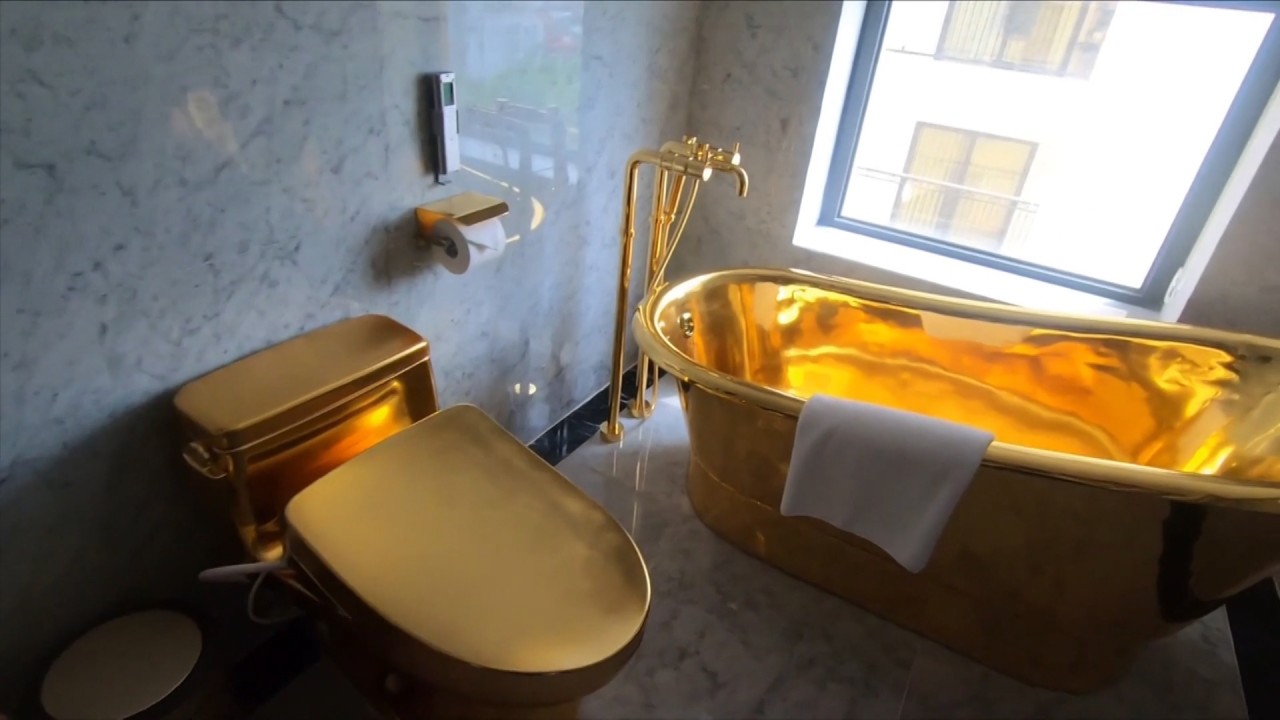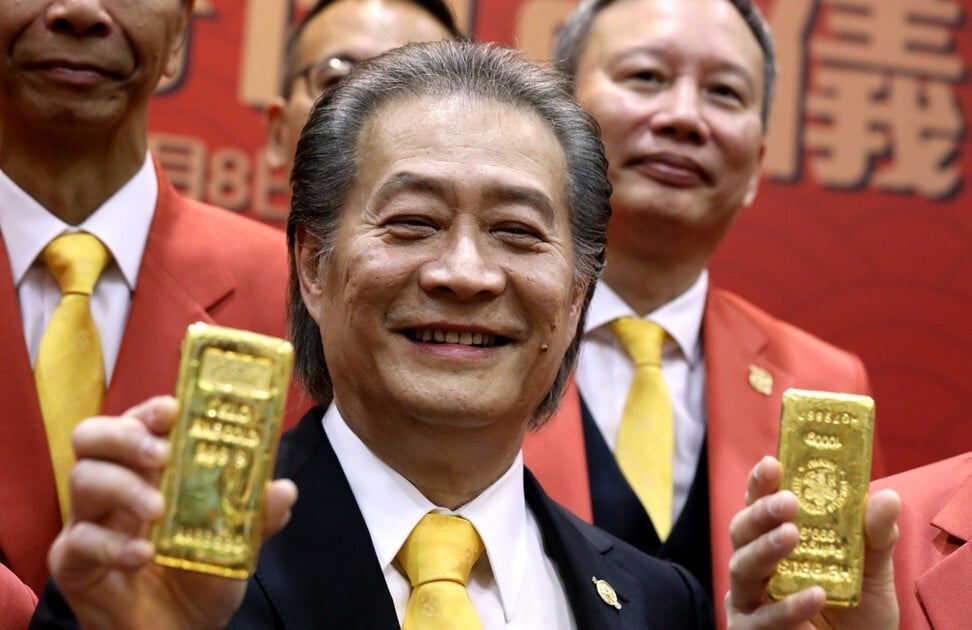
Explainer | How Kingold Jewelry’s fake gold bars slipped through scrutiny in one of China’s biggest loan scams
- Kingold Jewelry allegedly passed off gilded copper bars as collateral for US$2.8 billion of loans
- Bullion has to pass through state inspection and be stamped by accredited refiners before being eligible as loan collateral
The amount is equivalent to about 22 per cent of China’s annual gold output in 2019. If they were real, they would be worth about US$4.75 billion on the market today. However, Kingold last reported it held less than the reported amount of the yellow metal in its books.
The jeweller, based in Wuhan in central Hubei province, has denied any wrongdoing, according to Caixin. The company has not made any exchange filing regarding the accusation in the Caixin report. It also did not reply to emails and phone messages seeking comment.
Who are Kingold’s biggest lenders?
Kingold Jewelry indicated on May 14 that it would publish its 2019 annual accounts no later than June 29, citing audit delays caused by the coronavirus pandemic. The results are still not available, according to its 10-K filings in New York.
Its cash and long term debt were negligible at US$651,318 and US$154,098, respectively.
The company had 6,256kg of gold (99.99 per cent purity) with a fair market value of about US$267.2 million pledged for long term loans, including a US$70 million loan by Wuhan Kangbo Biotech, a company controlled by its CEO and founder. The remaining investments in gold of 54,401kg worth US$2.32 billion were classified as current assets.
Much likely has changed after that financial report.
Is gold commonly used as collateral for loans in China?
Real estate and publicly traded equities are common liquid assets readily accepted as collateral by Chinese financial institutions. Precious metals such as silver, gold or platinum are rarely used, except within the industry itself.
Some banks do accept gold bars or bullion as collateral, because bars are tradeable on the Shanghai Gold Exchange, where Kingold is a member. Owners are required to store the bars at the exchange’s warehouse beforehand, if they plan to trade them.

01:50
Vietnam boasts ‘world’s first gold-plated’ hotel
How does a bank ascertain its collateral is real gold?
Gold bullion or bars are supposed to go through a process of metallurgical assaying before they are moved to designated warehouses. Assaying, typically conducted by a government-certified office, is a way to ensure that the bullion or bars produced by a gold mint meet the purity standards and content.
There are about a dozen such offices in China. The National Jewelry Quality Supervision and Inspection Centre is certified by the General Administration of Quality Supervision, Inspection and Quarantine to conduct metallurgical assays on precious metals and stones.
Kingold’s “gold bars” were examined by its lenders, as well as state-controlled PICC Property & Casualty, which insured 30 billion yuan worth of the jeweller’s loans, according to the Caixin report.
Kingold’s assets were also said to have been inspected by the Hubei provincial assay office, and the gem certification centre of the China University of Geosciences in Wuhan, the report added.
What are the loan procedures in Hong Kong?
Borrowers are required by lenders to provide “fresh” or “virgin” gold directly sourced from accredited producers or refineries. The accreditation may be from authorities or statutory associations such as the Chinese Gold and Silver Exchange and the London Bullion Market Association, according to Haywood Cheung Tak-hay, president of the Chinese Gold and Silver Exchange Society.
Bullion with the accredited refineries’ stamp are usually then sent to designated vaults, such as the precious metals depository at Hong Kong International Airport. Vault operators and lenders will send independent assayers to inspect the bullion. The chances of receiving fake gold bars are extremely slim, Cheung says.

Lenders will not accept gold bullion acquired from secondary market places, he adds. The borrower is required to sell such bullion first to an accredited refiner, who in turn will ship those with its stamp to the lenders for loan assessment.
Have there been similar fraud cases in China?
In June 2014, a private metals trading company called Decheng Mining allegedly duplicated warehouse certificates for copper and aluminium stored in Qingdao city and pledged the stock as collateral for bank loans, according to public statements by local police and an intermediate court in the city.
The scam was estimated to have resulted in US$3 billion of losses for a number of Chinese banks and foreign financial institutions including Citigroup and Standard Chartered, and trading houses like Mercuria, according to court documents.
Steel products were acceptable as collateral between 2009 and 2013, when China’s economy was swamped by easy credit from the 4 trillion yuan of infrastructure stimulus spending after the global financial crisis.
During those years, steel traders were told by loan assessment officers that they could move an encumbered batch of steel products to a different warehouse, and use the same batch as collateral against another loan from another lender.
What are Kingold’s origins?
Kingold was founded in 2002 by its current chairman and chief executive officer Jia Zhihong. It is now the largest gold processor in Hubei province. The company got on the Nasdaq exchange via a “backdoor listing” process.
The 59-year-old Hubei native is well connected with local authorities and businesses, according to Caixin. The company sells both directly to retailers as well as through major distributors across China.
What happened to executives convicted of similar fraud in China?
The Kingold case could be China’s largest loan scandal by value and is being investigated by various authorities, according to Caixin.
In a relatively smaller crime, Jiangsu Shente Steel Group was found to have falsified warehouse certificates of steel products between 2013 and 2014 to dupe five banks for 4.5 billion yuan of loans.
Its finance department chief Gu Shiying was sentenced to three and a half years imprisonment by an intermediate court in Anhui province early this year. Gu was also fined 100,000 yuan.
With additional reporting by Peggy Sito

